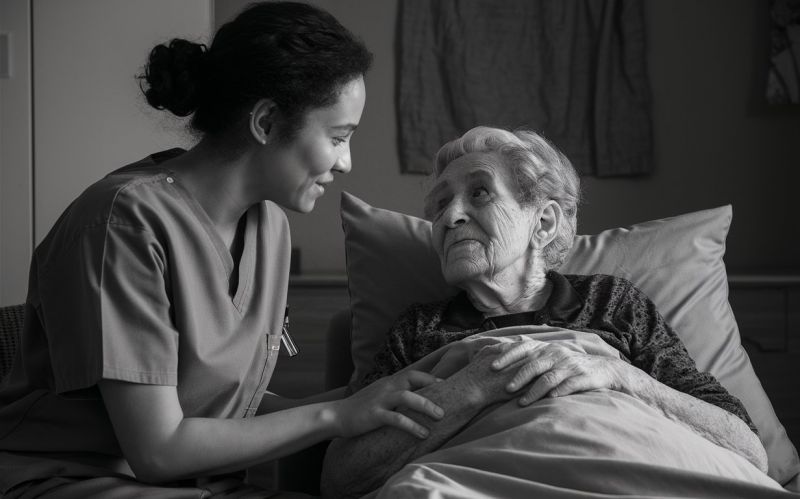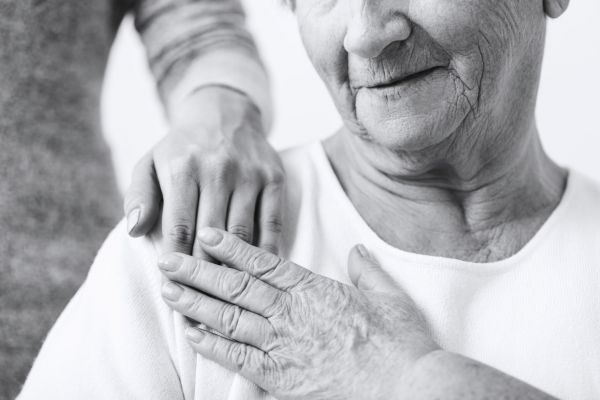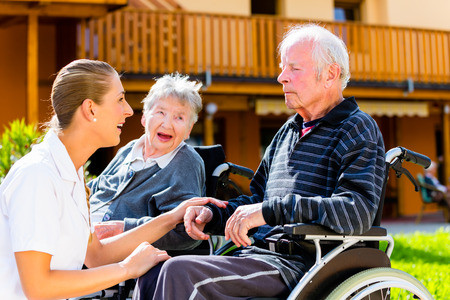Essential Care Tips for Bedridden Patients: Maintaining Comfort and Preventing Complications
iSavta | 17.08.2024

Caring for bedridden patients requires a combination of compassion, skill, and knowledge. As a caregiver, particularly if you are from a country like the Philippines, Sri Lanka, Thailand, or India, understanding the nuances of bedridden patient care can make a significant difference in the quality of life for those you look after. This guide provides essential tips to maintain comfort and prevent complications for bedridden patients.
1. Positioning and Repositioning
One of the most critical aspects of caring for a bedridden patient is proper positioning. Long periods of immobility can lead to pressure sores (bedsores), which are painful and can lead to more severe complications. To prevent these, reposition the patient every two hours. Use pillows or foam wedges to keep them in a comfortable position and to reduce pressure on vulnerable areas such as the heels, hips, and back.
When repositioning, be gentle to avoid causing discomfort or injury. Ensure that the patient is properly supported and that their body is aligned to prevent strain on any part of their body.
2. Skin Care
Skin integrity is crucial for bedridden patients. Inspect the skin daily for any signs of redness, sores, or irritation. Keep the skin clean and dry, and use a mild, non-irritating soap to prevent infections. Moisturize the skin with a non-fragranced lotion to keep it hydrated, especially in areas prone to dryness.
For patients with incontinence, use absorbent pads and change them promptly to avoid skin breakdown. Barrier creams can protect the skin from moisture and irritation.
3. Hygiene and Personal Care
Maintaining personal hygiene is important for both comfort and health. Bathe the patient regularly, using a no-rinse body wash if moving them is difficult. Pay attention to areas that may be prone to infection, such as the armpits, groin, and under the breasts.
Oral hygiene is equally important. Brush the patient’s teeth or clean their mouth with a damp cloth or mouth swabs to prevent oral infections and discomfort. Regular mouth care can also help maintain overall health.
4. Nutrition and Hydration
Proper nutrition and hydration are essential for the overall well-being of bedridden patients. Ensure that the patient is receiving a balanced diet appropriate for their needs. If they have difficulty swallowing, consider pureed or soft foods.
Encourage fluid intake to prevent dehydration and maintain kidney function. If the patient has dietary restrictions or specific health concerns, consult with a nutritionist to tailor their diet appropriately.
5. Exercise and Mobility
Even though the patient is bedridden, gentle exercises and movement can help maintain muscle strength and prevent complications such as contractures (shortening of muscles or tendons). Perform passive range-of-motion exercises by moving the patient’s arms and legs gently through their full range of motion.
Encourage deep breathing exercises to improve lung function and prevent pneumonia. Adjust the patient’s position frequently to promote circulation and avoid muscle stiffness.
6. Monitoring and Reporting Health Changes
Vigilant monitoring of the patient’s health is crucial. Keep track of vital signs such as temperature, heart rate, and blood pressure. Watch for any signs of infection, changes in skin condition, or alterations in the patient’s usual behavior or symptoms.
Report any significant changes to the healthcare provider promptly. Being proactive in identifying and addressing health issues can prevent serious complications and ensure timely medical intervention.
7. Emotional Support
Being bedridden can be emotionally challenging for patients. Provide emotional support by engaging with them in conversations, listening to their concerns, and encouraging them to participate in activities they enjoy, such as reading or listening to music.
Your presence and reassurance can greatly enhance their mental well-being. Simple acts of kindness and companionship can make a significant difference in their overall quality of life.
8. Creating a Safe Environment
Ensure that the patient’s environment is safe and comfortable. Remove any potential hazards from the room to prevent falls or accidents. Keep essential items within easy reach to minimize the need for the patient to reach or stretch.
Adjust the room temperature and provide appropriate bedding to keep the patient comfortable. A well-maintained and organized environment can contribute to the patient’s overall comfort and well-being.
9. Communication with Healthcare Providers
Maintain open communication with the patient’s healthcare providers. Regularly update them on the patient’s condition and any concerns you might have. They can provide valuable advice and adjustments to the care plan as needed.
By collaborating with healthcare professionals, you can ensure that the patient receives comprehensive care tailored to their specific needs.
Conclusion
Caring for bedridden patients requires a multi-faceted approach that addresses both physical and emotional needs. By implementing these essential care tips, you can enhance the comfort and well-being of the patients in your care while preventing common complications. Your dedication and attention to detail play a crucial role in improving their quality of life, making your role as a caregiver both impactful and fulfilling.












